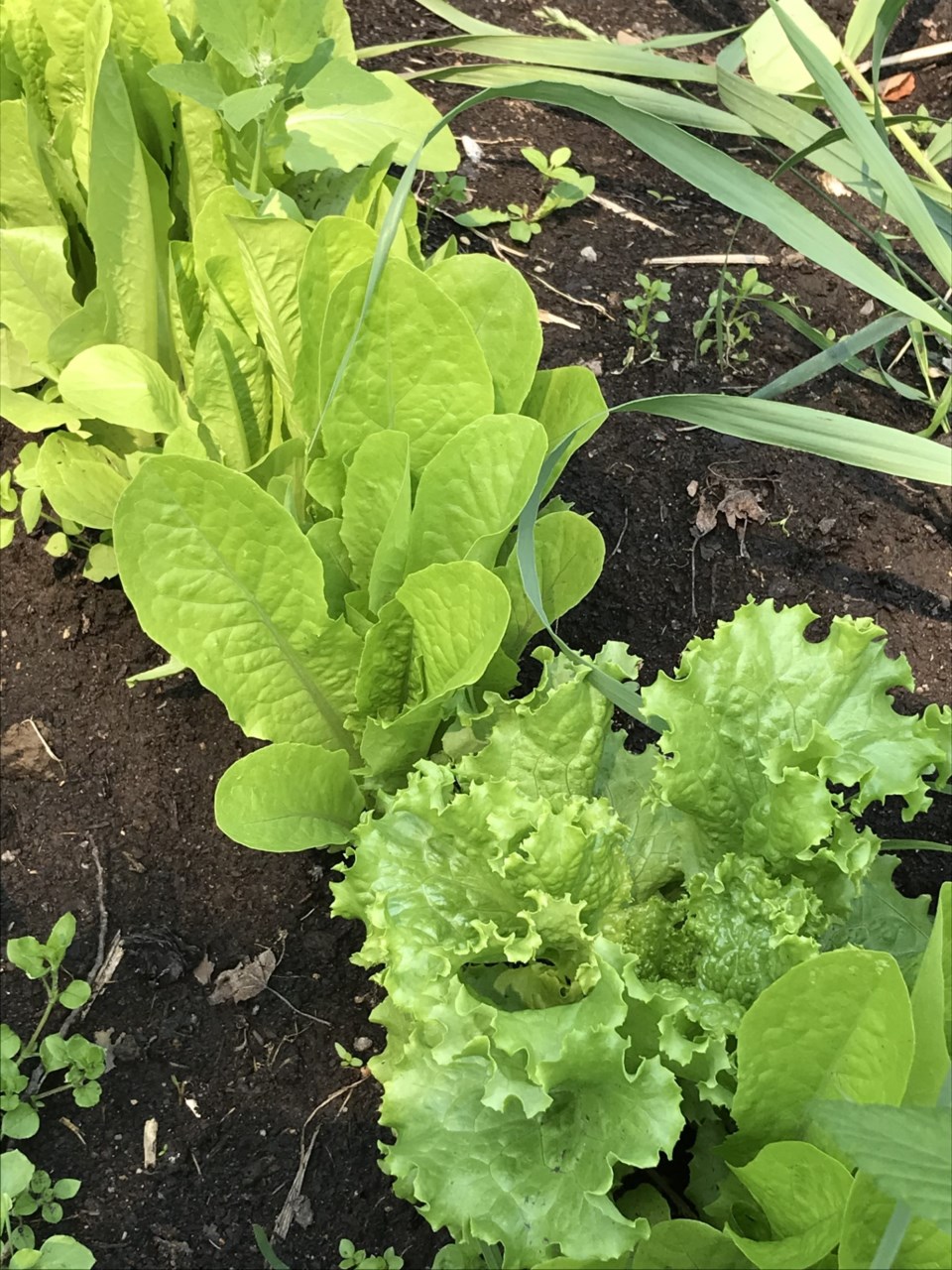By August, most Prairie gardeners have harvested their lettuce and are enjoying many of the root and vine crops. However, lettuce is one of those vegetables that can be planted several times throughout the Prairie growing season for multiple harvests. Some lettuce cultivars can be ready to eat in as little as 35 days from planting. There is still time to seed and harvest fresh lettuce before fall.
Lettuce (Lactuca sativa) is a cool season crop. This means that it prefers cooler temperatures for optimal growth. Because most lettuce cultivars mature in 30-60 days, there is still time to harvest one or even two lettuce crops before fall frost. Appreciate, however, that planting this late in the season can result in premature bolting of lettuce plants (ie. plants forming flower heads). Lettuce prefers temperatures between 15-20°C. Air temperatures above 20°C will initiate physiological processes within the plant that will cause the lettuce plant to bolt before it produces a significant number of leaves. The warmer the temperature, the faster the bolting will occur. Once a lettuce plant has initiated visible flower production, the taste becomes more bitter. When planting lettuce this late in the season, choose a shady location, if possible, and be prepared to provide ample water for the fast-growing plants to prevent bitter flavours.
Garden lettuce (Lactuca sativa) can be divided into four main categories: Leaf, Romaine, Butterhead and Iceberg. Of the four types, leaf and romaine lettuce are the easiest to grow in the Prairie garden.
- Leaf lettuce plants are characterized by large, loosely packed leaves joined at the stem. Leaf lettuce ranges in colour from light to dark green to deep burgundy, speckled or a combination of colours (ex. green leaves with burgundy leaf tips). It usually has a mild flavour with a crispy texture but not as crisp as Romaine lettuce. Oak leaf lettuce refers to flatter leaf types shaped like oak leaves: they can be either red or green in colour. Batavia lettuce is also known as summer crisp or French crisp lettuce. Batavia lettuce looks like a loose leaf lettuce when it is young but tends to form a tight bunch as it matures. One of the advantages for home gardeners growing leaf lettuce instead of other types of lettuce is that leaves can be picked individually instead of pulling the entire head at once.
- Romaine lettuce is most commonly used for Caesar Salads and is often referred to as Cos lettuce. Romaine lettuce has long, green leaves that form an oblong head. Its crisp texture with a stronger flavour than butterhead or leaf lettuce, makes it a favourite among food lovers looking for the crispy texture of iceberg lettuce however, Romaine lettuce has higher nutrient analysis than iceberg lettuce. Although the flavour is strong in Romaine lettuce, it should not be bitter. Previously Romaine lettuce types formed quite large heads at maturity however, newer cultivars can be grown with smaller, individual-sized heads. Some of the newer Romaine lettuce cultivars also have a hint of burgundy colour in their leaves.
- Butterhead, bibb or Boston lettuce names are used interchangeably to describe lettuce cultivars that are known for their soft, “buttery” textured leaves and sweet, mild flavour. The loose-forming heads of this lettuce type range in colour from light to dark green. In the last several years, grocery stores are selling ‘living lettuce’ or ‘hydroponic lettuce’. It is the Butterhead (i.e. Bibb or Boston) lettuce cultivars that are used for these living lettuce sales.
- Iceberg lettuce forms a tight, cabbage-like head of pale, green leaves. Iceberg lettuce is one of the crunchier lettuce types due to its high water content in the leaves. I don’t recommend growing iceberg lettuce, especially later in the Prairie season, as it tends to bolt early and has many disease problems under the hot summer temperatures.
Seeding distances between plants and rows for lettuce will be determined by the type of lettuce being grown. Follow directions on the seed package. Baby leaf lettuce can be sown much closer than romaine lettuce which will be harvested as large heads. Lettuce seed should be lightly covered at planting time (only 3mm deep).
Lettuce is ready to harvest whenever the size of the leaf is suitable for consumption. Remember, oversized leaves and lettuce plants that are starting to bolt will tend to be more bitter.
Enjoy lettuce from the garden for as long as you can. The fresh flavour of garden lettuce is never the same as the lettuce purchased in the grocery store.
This column is provided courtesy of the Saskatchewan Perennial Society (SPS; [email protected] ). Check our website (www.saskperennial.ca) or Facebook page (www.facebook.com/saskperennial) for a list of upcoming gardening events.




